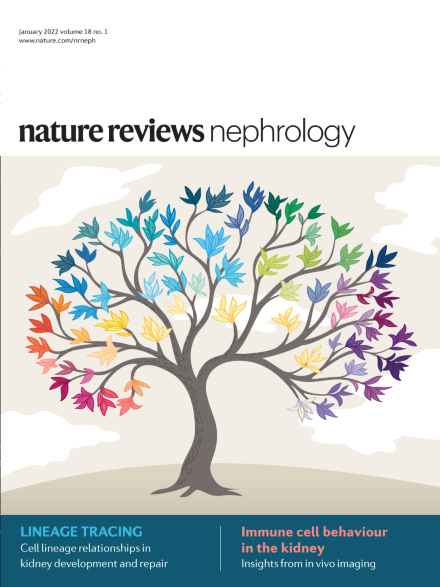参考试验信息设计,探索试验未充分代表的亚组的治疗效果
IF 28.6
1区 医学
Q1 UROLOGY & NEPHROLOGY
引用次数: 0
摘要
随机对照试验(RCT)通常被视为临床证据的 "黄金标准"。然而,其严格的资格标准可能会影响队列的多样性,并限制纳入某些亚群,包括合并症患者、老年人或少数民族患者。观察数据,包括来自电子健康记录的数据,可用于弥补证据方面的不足,但由于缺乏随机化,可能会出现偏差和混杂。"目标试验 "模拟框架利用观察数据模拟假设 "目标试验 "的设计,已越来越多地用于因果推断1,2。尽管这种方法通过设计决策来限制偏倚和混杂的影响,但观察到的结果是否与在 RCT 环境下获得的结果一致仍存在不确定性。使用特定的现有 RCT("参照试验")为进一步提高推论的有效性提供了机会。实现这一目标的方法是将目标试验设计建立在参照试验的基础上,并将模拟研究的结果与参照试验的结果进行比较。在将分析扩展到试验未充分代表的群体之前,这种方法可增加对观察研究结果的信心。本文章由计算机程序翻译,如有差异,请以英文原文为准。
Reference-trial-informed design to explore treatment effects in trial-underrepresented subgroups
求助全文
通过发布文献求助,成功后即可免费获取论文全文。
去求助
来源期刊

Nature Reviews Nephrology
医学-泌尿学与肾脏学
CiteScore
39.00
自引率
1.20%
发文量
127
审稿时长
6-12 weeks
期刊介绍:
Nature Reviews Nephrology aims to be the premier source of reviews and commentaries for the scientific communities it serves.
It strives to publish authoritative, accessible articles.
Articles are enhanced with clearly understandable figures, tables, and other display items.
Nature Reviews Nephrology publishes Research Highlights, News & Views, Comments, Reviews, Perspectives, and Consensus Statements.
The content is relevant to nephrologists and basic science researchers.
The broad scope of the journal ensures that the work reaches the widest possible audience.
 求助内容:
求助内容: 应助结果提醒方式:
应助结果提醒方式:


